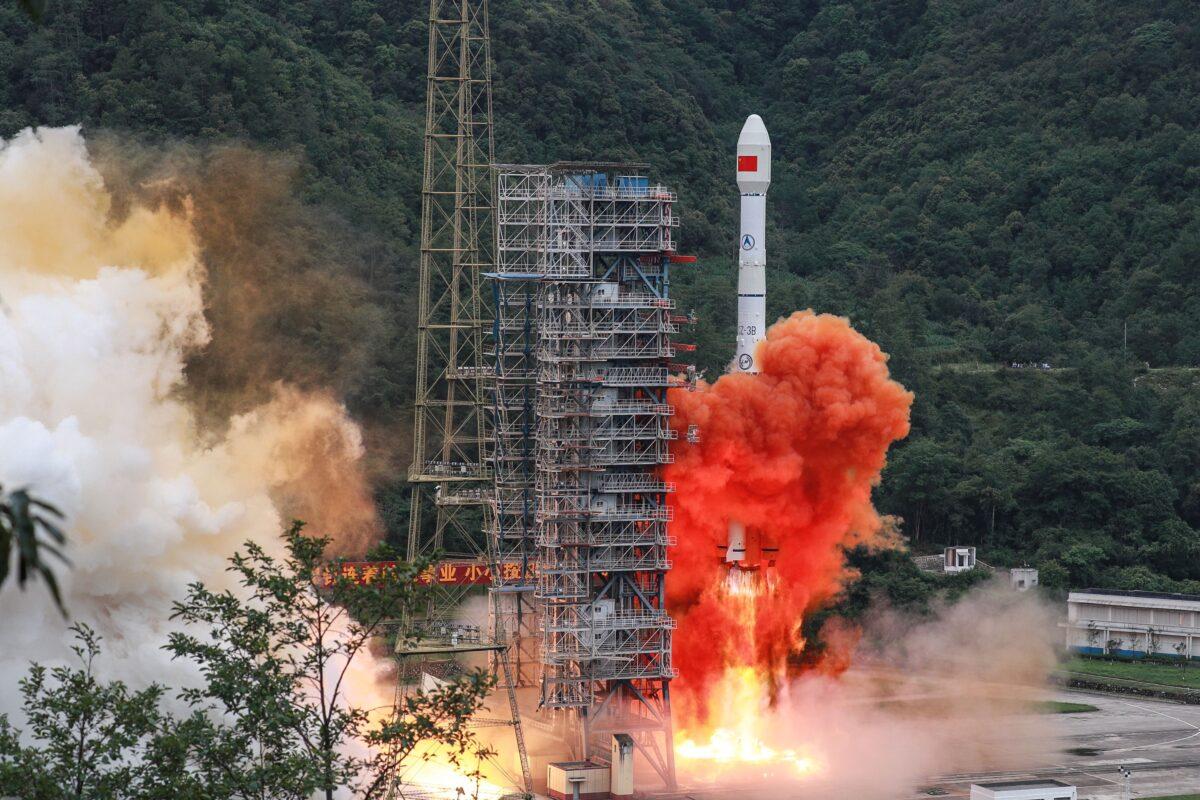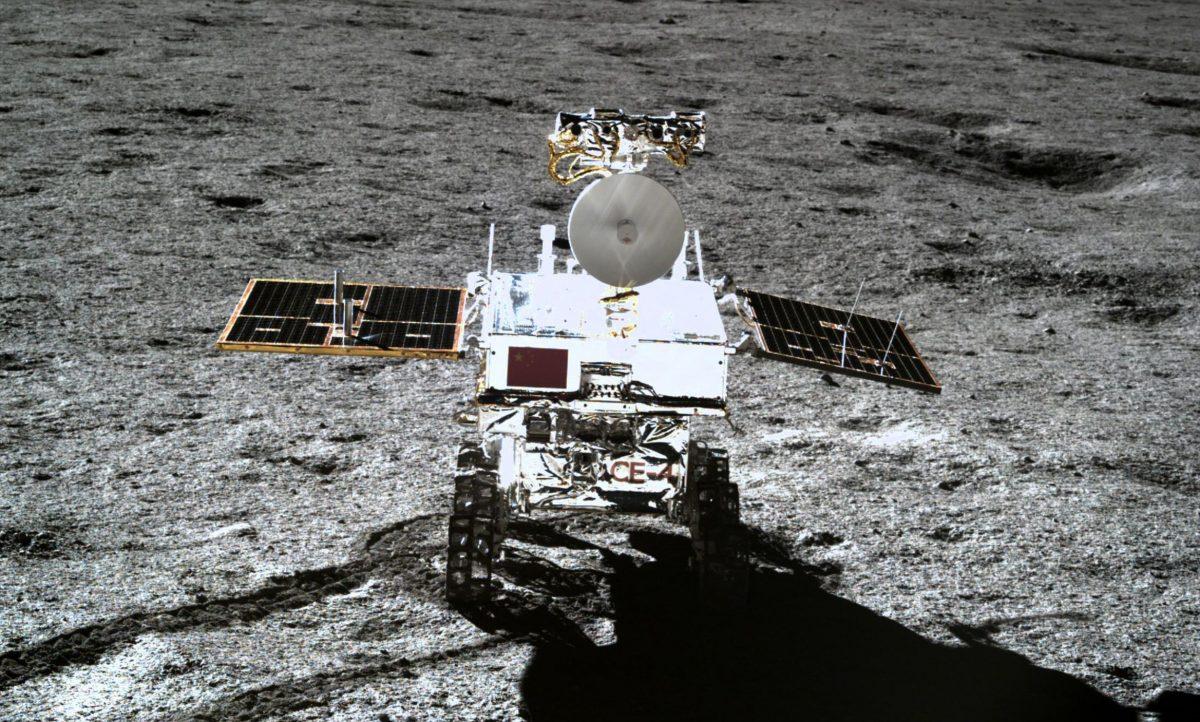The United States needs to invest a trillion dollars in space technology over the next decade, according to one analyst, to avoid a “space Pearl Harbor” at the hands of Russia or China.
China also is working toward “space mining” for the rare earth metals that are vital to the tech race with the United States, according to Brandon Weichert, author of the recently published book, “Winning Space: How America Remains a Superpower.”
The push for territory in the South China Sea and construction of militarized islands is a “prologue” to Beijing’s space ambitions, said Weichert. “They’re sort of showing us what they’re going to do in space.”
Unlike the limited impact of the South China Sea, however, space affects everyone everywhere, he said.
“As the history of warfare has proven, if you control the high ground, you control the whole dynamic on the lower planes of battle.”
Pentagon officials over the past few years or so have increasingly highlighted Russia and China’s weaponization of space.

According to the Defense Intelligence Agency (DIA), China is second only to the United States in the number of operational satellites it has, with more than 120 devoted to intelligence, surveillance, and reconnaissance.
Weichert doesn’t think the tech industry in the United States, left to its own devices, will push forward technology developments fast enough to match the civil–military fusion driving China’s space program.
He believes that to avoid China or Russia seizing what is sometimes known as the “ultimate high ground” of space, the United States needs more federal funding.

“Americans had better start playing catch up, otherwise, we will face a space Pearl Harbor,” he said. “You’re seeing the end, basically, of American power projection.”
Outlining the threats the United States already faces in space, Weichert gave the example of Chinese building laser capabilities.
“Usually, these are fired up from the ground in China, and can temporarily blind the optical gear on sensitive satellites passing overhead,” he said. That might temporarily knock locally stationed U.S. forces out of a fight in the Indo-Pacific region.
Satellites are a vital part of modern U.S. infrastructure and its military. The GPS signal alone is needed to keep oil pumping through pipelines, cash flowing at ATMs, and to keep automated trading ticking–not to mention keeping missiles on target.
Sanctuary: A Dangerous Notion
Weichert says the “utopian” view of space as a safe haven doesn’t match reality, and is held only in Western academic circles.“The idea that space is a sanctuary like Antarctica is insane and dangerous, and will lead to an attack on us in space from either China or Russia.”
Weichert said space exploration has, in fact, been mixed with military endeavor from the beginning, noting that the Sputnik satellite was a military satellite.
“Everything since then has been in terms of the space development from both ourselves and other countries has always been under the imprimatur of a military operation.”
Even friendly countries like Israel or India have used space, their space programs as a military aspect, as well as an ability to project power or an ability to allow for their military forces to have greater surveillance and communications capabilities.”
Facing a new space race, the United States can’t rely on private industry as the main thruster for the technology, Weichert said.
“The overall high tech research and development sector, federal R&D budget has just collapsed since the ‘90s,” he said. “While private-sector R&D is great for coming up with the new sort of button for your iPhone, it’s not so good for building the next great space launch system or not so great for building a quantum computing revolution. In China, they just throw tax dollars at any industry, whether it works or not.”
Weichert gave the example of a new alloy created by Google in 2016.
“It’s lighter than plastic, tougher than titanium. The problem is it needs $200 million for it to be built out and scaled up. Google will not invest that kind of money.”
The solution, he said, is for a congressional push.
“We need really a trillion dollars or more, over a decade invested in the space industry, in the space program, military, and civilian alike.”
In the meantime, the United States needs bodyguard satellites, he said.
Space Mining
Weichert also noted that China is trying to be the first to Mars. He said this isn’t just about gaining a propaganda victory, but also about being able to draw the technical talent and investment away from the United States.“They certainly want to beat us to get to the first people on Mars to sort of paint Mars red with China’s Communist Party flag. And they have worked assiduously to leapfrog the Americans.”
Then there are the minerals.
China plans to have a lunar outpost by 2024. By 2028, Beijing intends to put astronauts on the lunar surface “with intention of mining the rare earth minerals which are in abundance on the lunar surface,” Weichert said.

“That will allow them to not only gain prestige, and to dominate the most valuable real estate on the moon, but it will also allow them to get a first-mover advantage in what many assume to be a multitrillion, if not a quadrillion-dollar economy in space mining.”
In the future, Mars could act as a kind of hub for mining the asteroid belt, he said.
In November, China will run tests on a small mining satellite in orbit. Next year, it will launch its version of the Hubble One telescope.
But it won’t be pointed at distant galaxies.
“That’s going to be a small surveillance satellite directed at the asteroid belt around Earth’s orbit that can specifically pinpoint resource-rich asteroids,” Weichert said. “And then they’re going to deploy future versions of these mining satellites to the asteroid belt to harvest those minerals before the Americans can. If they get a hub at Mars, they’ve just created the supply chain in space.”
Weichert praised the Trump administration for the creation of the Space Force and its actions to tackle the space threat, which he said has been known to the Pentagon since at least 2013.







Friends Read Free